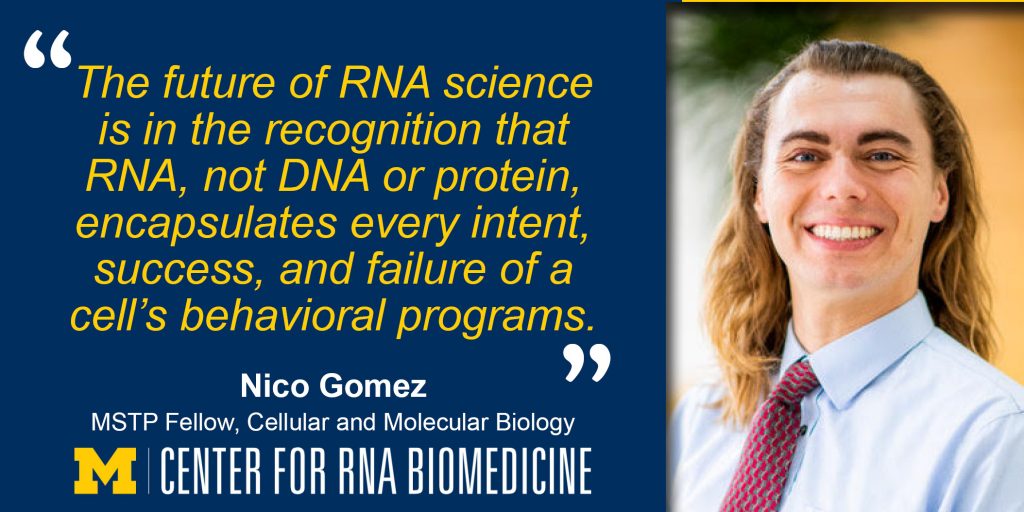RNA Featured Researcher – Nico Gomez, Cellular and Molecular Biology
Nico Gomez
MSTP Fellow, Cellular and Molecular Biology
Sami Barmada Lab
Who/what brought you to science? I’ve been fascinated with nature for as long as I can remember. My curiosity for biological systems eventually turned inwards towards those that governed my behavior, thoughts, and emotions. My exposure to the medical field, in turn, reshaped these interests to the study of how failure of these biological systems results in neurological disease.
What are your research interests? I am primarily interested in exploring how the regulation of nucleic acid, the primary bearer of durable biological information across all living things, can be used to understand and treat disorders of the brain. In particular, RNA, a highly dynamic, multifunctional, and modifiable macromolecule, holds the potential to help explain the complex behavior (and misbehavior!) of cells and tissues in response to their environment. Like DNA, RNA is a content-rich code, but unlike DNA, RNA is the manifestation of a cellular plan in action.
What do you hope is the outcome/impact of your research? In the past 5 years I’ve been focused on elucidating the mechanism(s) of action of an experimental therapeutic target for amyotrophic lateral sclerosis (ALS). Over this time, we’ve encountered both expected, and perhaps more importantly, unexpected results that I hope will help guide us and others in the design of more targeted and effective therapies for ALS.
What advice would you give to students who’d like to get more involved in research? Research has very little to do with coursework! After doing poorly in genetics in college, I was deeply demoralized and turned off by everything relating to DNA and RNA. During my doctoral work, however, fulfilling experiences with molecular cloning, next generation sequencing, and even regular old PCR radically changed my outlook on nucleic acids research.
What profession other than your own would you like to attempt? I am an avid baker and gardener. In my next life, I will be a market gardener and sell sourdough and produce at a farmers market near you.
What are your longer-term career aspirations? For me, academic medicine, and specifically bench-to-bedside research, is made possible by an ideal combination of quixotry and practicality; creativity and compassion. In the next ten years I will continue my medical and scientific training with the ultimate goal of opening a highly collaborative lab alongside practicing clinical medicine.

